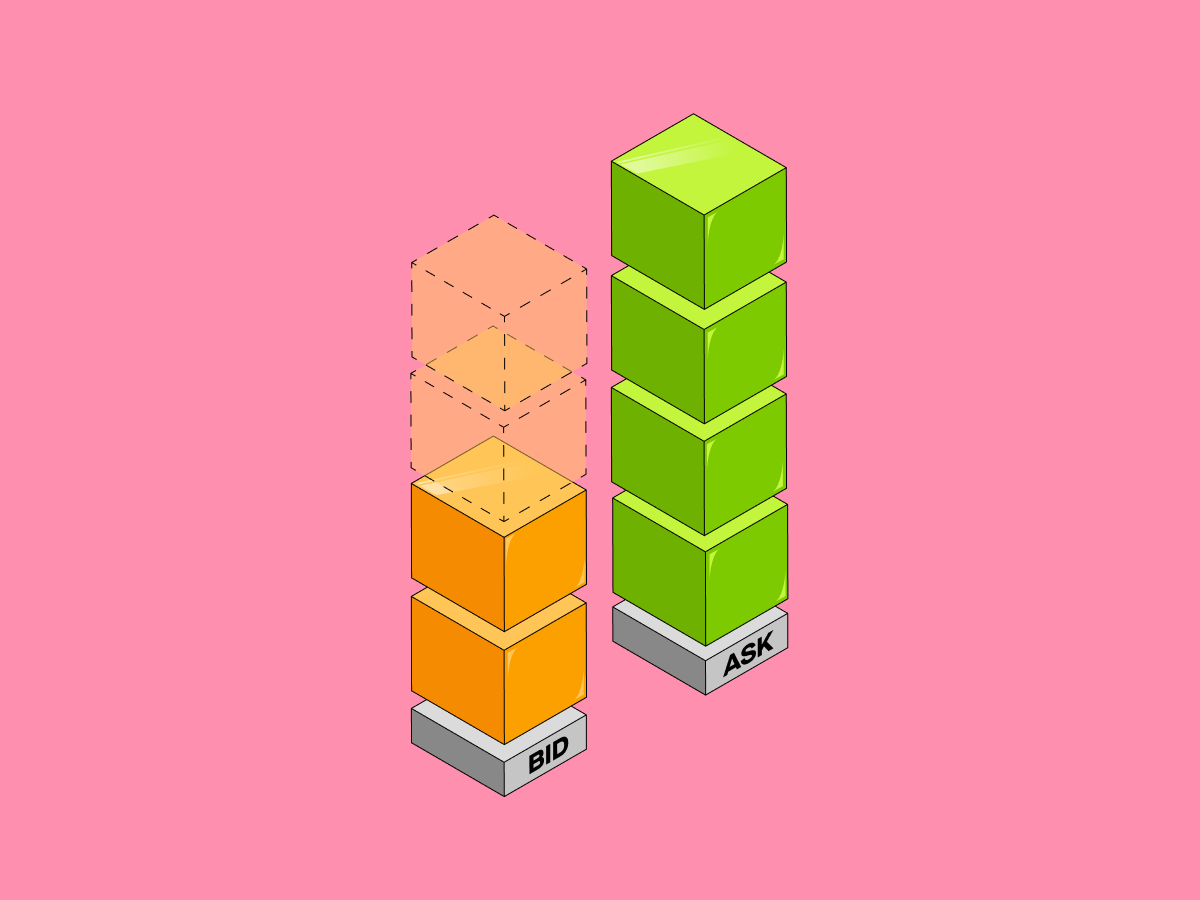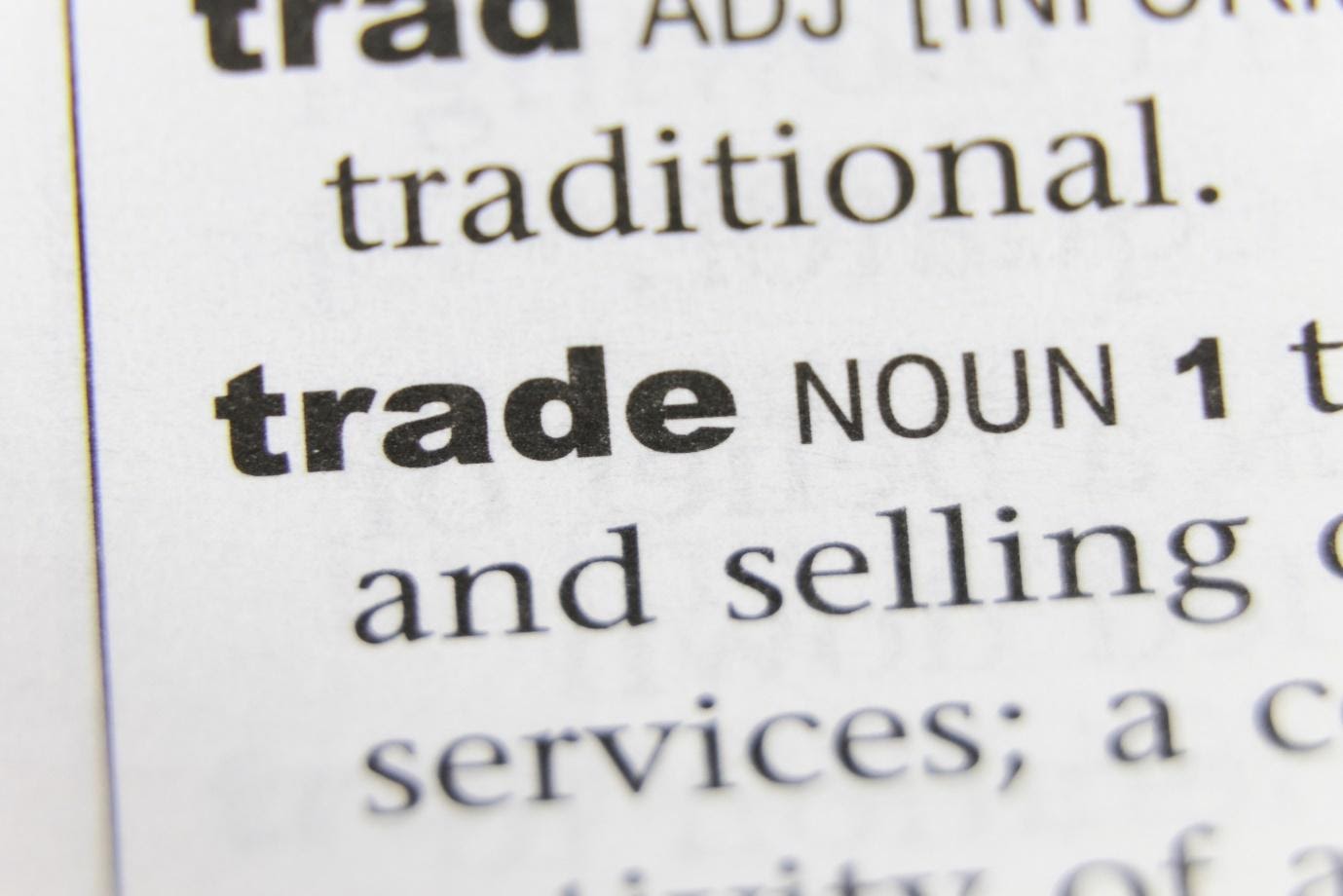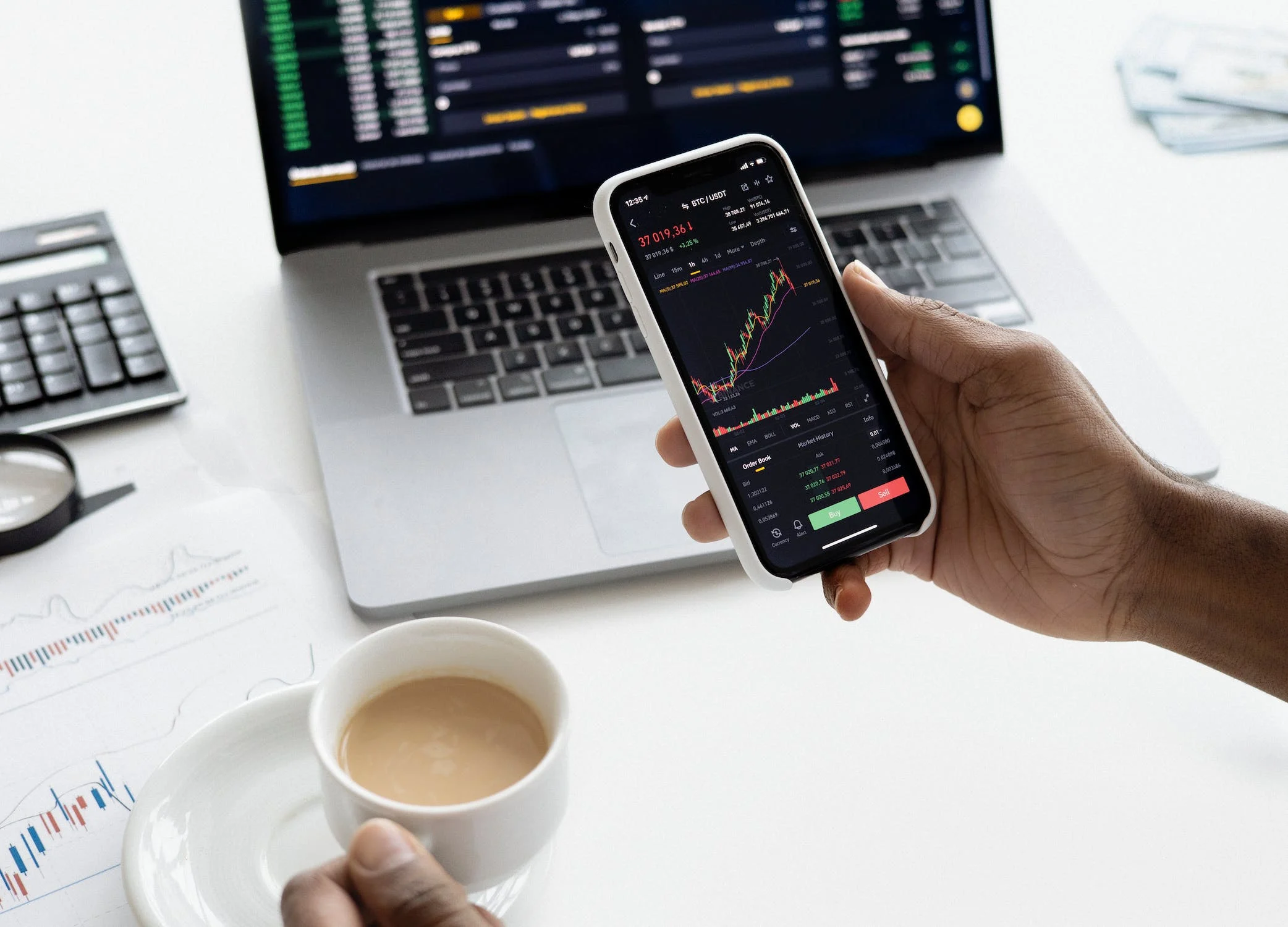Trading can be a profitable way to invest money, but it's also a complex world with its own language and jargon. For beginners, learning the terminology and mechanics of trading can be overwhelming, and it's important to understand the key concepts and vocabulary in order to make informed decisions. In this beginner's guide, we'll demystify trading terminology and bridge the knowledge gap by explaining the most common terms and concepts in simple language. We'll cover the mechanics of trading, including how orders are placed and executed, the role of liquidity and volume in the market, and the impact of different order types on trading strategy. We'll also discuss the benefits and risks of market orders and limit orders, two of the most common order types used by traders. By the end of this guide, you'll have a solid foundation of trading terminology and be better equipped to navigate the markets. 
Key Terminology in Trading: A Beginner's Guide
To help new traders navigate the complex world of trading terminology, it's important to start with the basics. Here are some key terms that every beginner should know:
- Bid and Ask: The bid is the highest price a buyer is willing to pay for an asset, while the ask is the lowest price a seller is willing to accept for the same asset.
- Spread: The difference between the bid and ask prices.
- Liquidity: The ability to buy or sell an asset quickly without affecting its price.
- Volume: The total amount of a particular asset that is being traded.
- Market Order: An order to buy or sell an asset at the best available price.
- Limit Order: An order to buy or sell an asset at a specified price or better.
- Stop Loss Order: An order to sell an asset when it reaches a certain price, to limit potential losses.
Understanding the Language of Trading: A Glossary of Terms
As traders progress and become more experienced, they will encounter more complex terminology. Here are some additional terms that traders should know:
- Long and Short: A long position is when a trader buys an asset with the expectation that its price will rise in the future, while a short position is when a trader sells an asset with the expectation that its price will fall.
- Margin: The amount of money required to open a leveraged position.
- Leverage: The use of borrowed funds to increase the potential return of an investment.
- Volatility: The degree of variation of an asset's price over time.
- Arbitrage: The practice of buying and selling the same asset on different markets to take advantage of price discrepancies.
Bridging the Knowledge Gap: Demystifying Trading Terminology
The language of trading can seem overwhelming to beginners, but it is crucial to view it as a tool for conveying market information. Instead of relying solely on memorizing definitions, traders should prioritize comprehending the context behind the terminology. It is also important to recognize that trading terminology can vary across different markets and individual traders. Trading terminology is closely linked to market dynamics, and traders should be aware of how their actions impact the market and how the market, in turn, affects their decisions. Understanding these dynamics is vital for making well-informed trading choices.
Terminology for Trading: What You Need to Know
 Understanding the terminology used in trading is crucial for traders.[/caption] In the world of trading, terminology is a language that can open doors to new opportunities. By understanding the language of trading, traders can make more informed decisions and increase their chances of success. However, it's important to remember that terminology is just one aspect of trading. Traders should also focus on developing a deep understanding of market dynamics, risk management, and other key aspects of trading.
Understanding the terminology used in trading is crucial for traders.[/caption] In the world of trading, terminology is a language that can open doors to new opportunities. By understanding the language of trading, traders can make more informed decisions and increase their chances of success. However, it's important to remember that terminology is just one aspect of trading. Traders should also focus on developing a deep understanding of market dynamics, risk management, and other key aspects of trading.
The Mechanics of Trading: How Orders are Placed and Matched
As a trader, you have a variety of order types available to you when buying or selling assets. One of the most commonly used order types is the market order. With a market order, you can quickly buy or sell an asset at the current market price. If you're looking for more control over your trades, limit orders might be the right choice for you. With a limit order, you can set a specific price at which you're willing to buy or sell an asset, allowing you to better manage your risk and avoid unexpected price changes. Stop orders are another popular order type that can be used to trigger a trade once a certain price level has been reached. And for even more precision, you can use stop-limit orders which combine the features of both stop and limit orders to give you even greater control over your trades. When an order is placed, it is added to the order book for the particular asset being traded. The order book contains a list of all the buy and sell orders for the asset, along with the prices at which traders are willing to buy or sell. When a buy order matches a sell order, a trade occurs. This happens when the price at which a buyer is willing to buy matches the price at which a seller is willing to sell. Once a trade has occurred, the order book is updated to reflect the new prices and quantities. After a trade has been matched, the order is executed. Which means that the buyer and seller exchange the asset and payment. There may be a delay between the time a trade is matched and the time it is executed, especially if the market is highly volatile or if there is a large amount of trading activity. This delay can result in slippage, which is when a trade is executed at a different price than the one that was expected.
Understanding the Market: The Role of Liquidity and Volume
 Liquidity and volume are two crucial factors that traders must consider when making trading decisions.[/caption] Let's take a closer look at what these terms mean and why they are important:
Liquidity and volume are two crucial factors that traders must consider when making trading decisions.[/caption] Let's take a closer look at what these terms mean and why they are important:
Definition of Liquidity and Volume in Trading:
High liquidity allows for quick and fair trading due to the presence of numerous buyers and sellers, while low liquidity makes trading more difficult and can influence the asset's price. Volume, on the other hand, reflects the total number of trades occurring within a given period, with high volume indicating active market participation and low volume indicating less activity.
The Importance of Liquidity and Volume in the Market
Liquidity and volume play a significant role in determining the ease and cost of trading. High liquidity enables quick trading with minimal impact on prices and lower costs. In contrast, low liquidity can lead to price fluctuations and higher costs. Meanwhile, the volume serves as an indicator of the level of interest and popularity of an asset, with high volume suggesting active trading and low volume indicating limited interest or uncertainty.
How High or Low Liquidity and Volume Can Affect Trading Decisions
Incorporating liquidity and volume analysis into trading decisions is essential. Traders should prioritize executing large trades without significantly affecting prices by selecting assets with high liquidity. Additionally, volume indicators provide valuable insights into market trends and can guide traders in making well-informed decisions.
Case Studies and Examples of How Liquidity and Volume Impact Trading Outcomes
High-volume stocks in the stock market are considered more liquid, meaning they can be bought and sold quickly and at a fair price. This liquidity provides traders with ease of executing trades without significant price fluctuations and transaction costs. On the other hand, low-volume stocks can result in higher transaction costs and price fluctuations due to limited market activity. In the cryptocurrency market, liquidity is a significant concern due to the high volatility of the market. Cryptocurrencies are known for their rapid price changes, and without sufficient liquidity, traders may struggle to execute trades quickly and at fair prices. To address this, traders often rely on specialized exchanges or trading platforms that offer adequate liquidity to ensure efficient trading. Liquidity and volume also play a crucial role in the pricing of commodities like gold or oil. When there is high demand and trading activity for these assets, their prices tend to increase. Conversely, low demand and trading activity can lead to lower prices for these commodities. Considering liquidity and volume is essential for traders when making trading decisions. By assessing these factors, traders can minimize risks and maximize returns by choosing assets that offer sufficient liquidity and trading volume.
Order Types and Their Impact on Trading Strategy
Traders have the flexibility to choose from a variety of order types. Each with its own set of advantages and disadvantages based on its goals and market conditions.
- Market Orders:
Market orders provide traders with a fast and efficient way to buy or sell securities at the prevailing market price. These orders are particularly useful for traders who want to enter or exit a position quickly, without being overly concerned about the exact execution price. While market orders can be executed quickly, they can also carry risks, particularly during periods of high volatility or low liquidity. It is important for traders to be aware of these risks and to take appropriate measures to manage them.
- Limit Orders:
Limit orders offer traders increased control over execution price and can help manage risk by setting a specific price at which to buy or sell a security. This feature is particularly important in volatile markets where prices can fluctuate rapidly. Additionally, limit orders can be used in combination with other strategies to create a more comprehensive risk management plan. However, it is important to note that there is a possibility that the order may not be filled if the price does not reach the specified level.
- Stop-Loss Orders:
A stop-loss order is an order to sell a security at a specified price or worse. These orders are used to limit potential losses in a trade by automatically exiting the position if the price reaches a predetermined level. Stop-loss orders can be a useful tool for risk management and can help traders avoid emotional decisions. However, there is a risk that the order may be executed at a worse price than anticipated, especially during times of high volatility. The choice of order type can have a significant impact on a trader's strategy and outcome. For example, a trader who is confident in a particular price level may use a limit order to enter or exit a position. Alternatively, a trader who wants to avoid large losses may use a stop-loss order to exit a position if the market moves against them. Different order types can also be combined in a single strategy, such as using a limit order to enter a position and a stop-loss order to exit the position if the market moves in an unfavorable direction.
The Risks and Rewards of Market Orders
Market orders and how they work
While market orders can provide fast execution and immediate liquidity, they come with certain risks that traders should be aware of. One of the main risks of using a market order is slippage. Slippage occurs when a trader executes a market order, but the execution price is different from the expected price. This can happen if there is a sudden change in market conditions or if the trader is trading in a low-liquidity market.
The risks associated with market orders: slippage and lack of control over execution price
Another risk of market orders is the lack of control over the execution price. When a trader places a market order, they are essentially agreeing to buy or sell at whatever the current market price is, regardless of whether that price is favorable or not. This lack of control can result in unexpected losses or missed profits.
The potential rewards of using market orders: faster execution and immediate liquidity
Despite these risks, there are some potential rewards to using market orders. For one, market orders provide fast execution, which can be important in fast-moving markets. Additionally, market orders provide immediate liquidity, which can be valuable for traders who need to quickly exit a position. However, traders should carefully consider their risk tolerance and overall trading strategy before using market orders. In some cases, it may be more prudent to use limit orders or other order types that provide more control over execution price.
Placing Limit Orders: Controlling Risk and Maximizing Returns
In addition to market orders, traders also have the option to place limit orders. A limit order is an order to buy or sell a security at a specific price or better. When placing a limit order, the trader specifies the price at which they are willing to buy or sell the security. The order is then executed only if the market reaches that price or better.
Limit Orders: Benefits for Traders
Limit orders offer traders increased control over execution price, helping them to manage their risk and avoid paying more or receiving less than desired. In volatile markets where prices can fluctuate rapidly, limit orders can be particularly valuable in controlling risk. Limit orders can also be combined with other strategies, such as stop-loss orders, to create a more comprehensive risk management plan. This makes them a versatile tool for traders looking to maximize their returns while minimizing their exposure to potential losses.
Maximizing Returns with Limit Orders
Limit orders can also be used to maximize returns in certain trading strategies. For example, in a breakout trading strategy, a trader may use a limit order to buy a security when the price breaks through a key resistance level. By setting the limit order at a slightly higher price than the resistance level, the trader can increase their chances of buying the security at a lower price while still taking advantage of the upward momentum.
Case Studies and Examples
One example of how limited orders can impact trading outcomes is the "buy the dip" strategy. In this strategy, a trader waits for a temporary drop in the price of a security before placing a limit order to buy at a lower price. By using a limit order, the trader can take advantage of the dip in price without risking buying the security at a higher price if the price quickly rebounds. A swing trader may place a limit order to sell a security at a specific price that they believe is the top of the current swing. By setting a limit order, the trader can take advantage of the potential price increase while also limiting their exposure to losses if the price suddenly drops.
Navigating the World of Trading with Confidence: A Summary of Key Terminology and Concepts
In the world of trading, understanding the terminology used in trading is crucial for any beginner. From order types to market dynamics, the language used in trading can often be confusing and intimidating. By familiarizing yourself with these key terms, you can bridge the knowledge gap and make more informed trading decisions. Remember to consider the impact of order types on your trading strategy. Always be aware of the risks and rewards associated with each type. With this knowledge, you can navigate the markets with confidence and improve your chances of success.